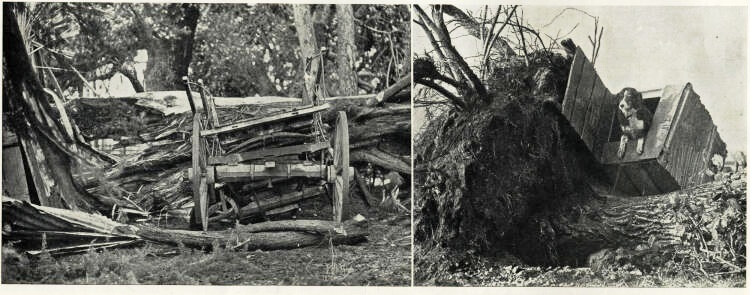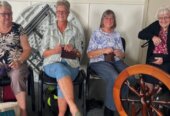Meghan Hawkes looks at some the headlines in Waipa in 1937.
A whirlwind hit the Orakau farm of Mr J Cullen causing extensive damage in just a few minutes.
It demolished a milking shed and a barn and also overturned a nearby bach. A haystack in an adjoining paddock received the full force of the blast and was scattered over a wide area. Large poplar trees were uprooted and stripped of their foliage, while walnut trees which had stood for over 50 years, came down. Power lines and telephone wires were damaged by a macrocarpa tree two metres in diameter, which was torn from its roots and thrown to the ground. A wagon, a hay mower and a sledge were also damaged.
“I have never seen so much destruction and desolation in such a short space of time,”‘ said Mr Cullen. “The wind was preceded by a loud rumbling noise and at first I thought it was an earthquake.”
The whirlwind seemed to be of a purely local nature and did not damage adjoining properties.
With a dry spell reaching its third week, early peat fires in the Waikato were continuing unabated and each day the haze of pungent peat smoke thickened around Waikato towns. The fires did not appear to be spreading rapidly due to the fact that the wind had been very calm.
The areas most affected were Patetonga, Koramatua, Paterangi, and the northern portion of the Rukuhia swamp. In the evenings the odour of burning peat was particularly noticeable and mornings rather dull as the result of smoke in the sky. The smoke was so thick in some areas that motorists had to slacken speed considerably as a measure of safety. At Paterangi flames were visible rising from burning areas in the centre of the swamp. After abnormally wet and cool summers in the Waikato during the previous two years, residents were noticing the early heat more this year. Everywhere the warm air was remarked upon, as the temperatures steadily rose.
Criticism of the Great South Road between Ōhaupō and Te Awamutu voiced by a South Island motorist was questioned by several other motorists who asked a reporter to drive a car over the road to see whether the criticism was warranted.
A fairly light car was taken over the worst portions of the road. Major works were in progress but there were sufficient notices posted to warn the motorist to drive slowly and carefully. The car was driven slowly and it was found that even the worst part of the road was easily negotiable. The car was taken over a stretch of road at a higher speed and the ride was not pleasant and springs liable to go, but this was solely due to the speed, showing that the southern visitor had not observed the warnings.
The Yellow Peril – ragwort – was by no means so much in evidence around Kihikihi as in former years, the work of eradication by the Waipā County Council proving very beneficial.
Farmers who were formerly hesitant about the success of ragwort control now spoke in glowing terms of the results. They were able to carry more stock and keep them in better condition, while losses were fewer. There were still, on many farms, thousands of ragwort plants, but farmers realised now how best to treat the pest and certainly would never allow it to obtain the mastery of productive lands again.

Mr Cullen’s property struck by a whirlwind in the Te Awamutu district









